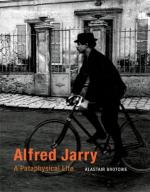|
This section contains 3,356 words (approx. 12 pages at 300 words per page) |

|
SOURCE: Issacharoff, Michael. “Intertextual Interlude: Jarry's Léda.” L'Esprit Créateur 24, no. 4 (winter 1984): 67-74.
In the following essay, Issacharoff examines the sources for one of Jarry's lesser-known plays, Léda.
Intertextual signals in drama are necessarily distinct from those used in other literary texts. The oral mode of transmission inherent to the medium requires a far more explicit method of cueing than that used in instances where a reader is not obliged to decode instantaneously and can, if need be, turn back and reread. I have suggested elsewhere1 that oral (and specifically theatrical) intertextuality is, in consequence, more likely to entail simplified textual mechanisms and processing.
Two forms of intertextuality2 are commonly used by dramatists: quotation and transformation. Quotation is the placing in a new textual environment of a normally recognizable passage and thus, sometimes, the subversion (or reinterpretation) of famous lines—Hamlet's soliloquy and the récit...
|
This section contains 3,356 words (approx. 12 pages at 300 words per page) |

|


